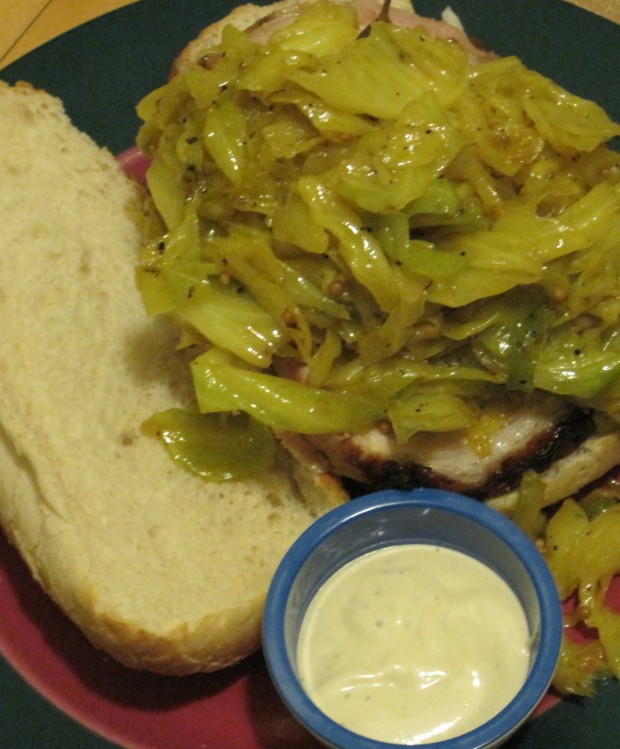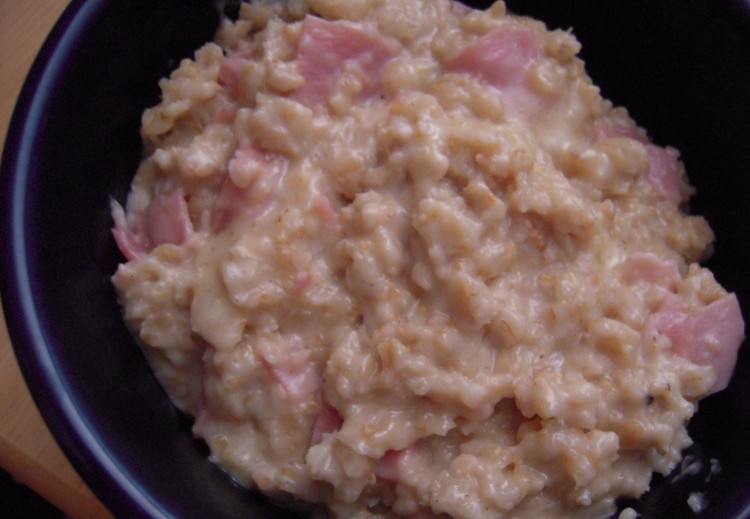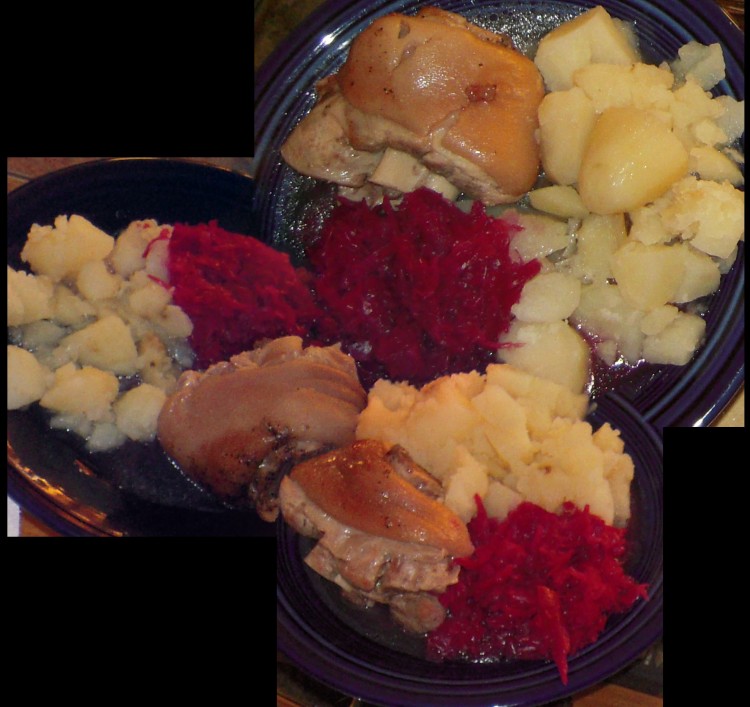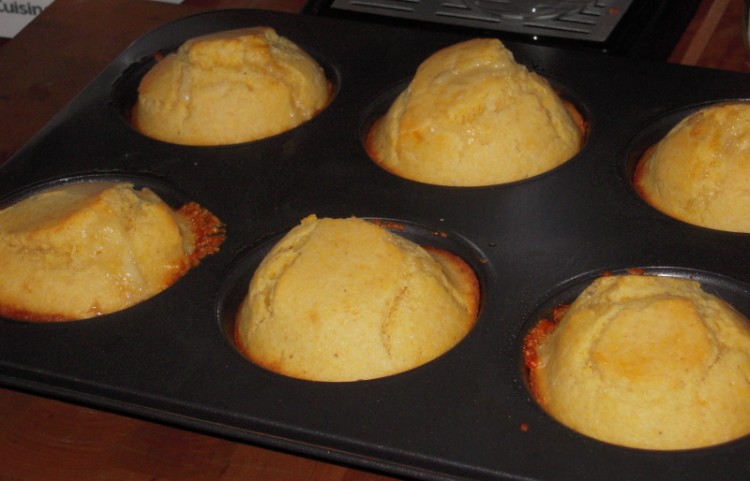
I don’t care about the Super Bowl but I care about ribs.
Ribs tend to be on sale now, so it’s a good time to pick them up. I found spare ribs (cut from the bottom portion of the ribs and breast bone) for less than $2 a pound the other day, but you had to buy two large, whole racks. OK, not really a problem for four people who might look for leftovers at night. I know baby backs (cut from the top of the ribs) are all the rage, but I prefer the more succulent spare ribs, with their layer of meat below where the bacon (belly) was removed.
This morning I found myself with two racks, each about 6 1/2 pounds, and decided to slow-roast them whole, mopped with a thin, Eastern Carolina-type sauce. I’m sure purists in that area would frown upon all the things I add to the cider vinegar, but I remain true to their “no tomato products” rule, at least. These ribs have a little zip but are mild. They’re good for people who don’t want the seasoning to overpower the taste of the pork. I also give you here my famous (at least in this house!) tamarind cabbage slaw. This slaw goes well with these ribs because it echoes a couple of the same ingredients. Note that it’s a dry slaw.
Spare Ribs with Piquant Seasoning
Makes two large racks
Make sauce the day before, if possible
For ribs:
2 whole racks spare ribs
Kosher salt
For the sauce:
Make extra if you want some to serve with the ribs
1 1/4 cup apple cider vinegar
3/4 cup water
Juice of 1 large orange + pulp
3 tbsp. tamarind concentrate or syrup (UNSWEETENED) (buy in Asian markets)
1 tbsp. Dijon mustard
1 tbsp. chocolate syrup
1 tsp. Sriracha sauce (buy in Asian markets, or use Tabasco)
1/2 tsp. instant coffee
3 tbsp. raw or light brown sugar
1/2 tsp. onion powder
1/4 tsp. garlic powder
1/4 tsp. ground thyme
1/4 tsp. ground rosemary
1 tsp. Kosher salt
1 tsp. freshly ground black pepper
1). Make sauce by combining all sauce ingredients well in medium saucepan and boiling, uncovered, for 10 minutes.
2). Allow sauce to cool to room temperature. If made the day before, allow it to come to room temperature.
3). Prepare ribs. For each: dry off, remove the membrane from rib side, sprinkle with salt on both sides and set on foil-covered sheet pan. Let sit while you prep the oven.
4). Prepare the oven. Set your oven racks so one is two from the top and the other is two below that. You want to avoid the top slot as well as the bottom, if your slabs overlap the sheets pans. If they do, line the bottom oven rack with foil.
5). Taking 1/3 of the cooled sauce, mop it over both sides of the ribs, leaving the meaty side up.
6). Allow ribs to sit on counter until they come close to room temperature, but no more than 45 minutes.
7). Preheat oven to 350 deg. F. and put ribs in.
8). Mop both sides of ribs with sauce every 45 minutes or so. For the last mopping, move the ribs to racks set into your sheet pans (not a must, but the ribs will be dryer if you do this), making sure that the meaty side is up when you’re done. If you run out of sauce for the last mopping, use pan juices. My racks took a total of 3 hours, but your cooking time may vary. They’re done when the thickest part comes easily off the bones. Use good food safety practices here. I used a pastry brush and washed it with soap after each mopping.
9). Allow to rest for 15 minutes before serving. Cut individual ribs evenly between the bones, or create little racks.
Note: If you have the time and space, prep and mop ribs the night before with 1/3 of the sauce. Wrap tightly in layers of plastic and refrigerate overnight. Forgo the first mopping when you make the recipe; just let them sit for 45 minutes on the counter before you put them in the oven.
Tamarind Cabbage Slaw
2 pounds shredded cabbage (a little carrot in there is fine)
1/2 cup good mayonnaise
Just under 1/2 cup tamarind concentrate or syrup (UNSWEETENED) (buy in Asian markets)
2 tbsp. apple cider vinegar
1 tsp. ground white pepper
1 tsp. Kosher salt
1). Whisk all except cabbage in large bowl.
2). Fold cabbage in with spatula.
3). Leave on counter for 30 minutes, mixing every 10 mins. or so. It will seem really, really dry until the cabbage gives off some liquid and deflates.
4). Cover and move to fridge until ready to serve, and mix right before serving.
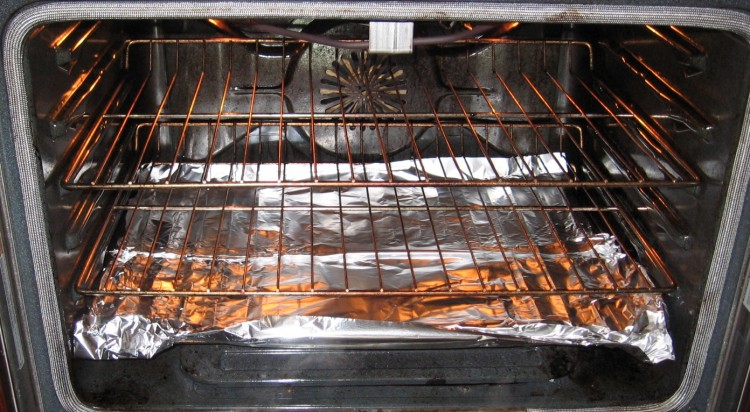
If your ribs overlap your pans, set this up
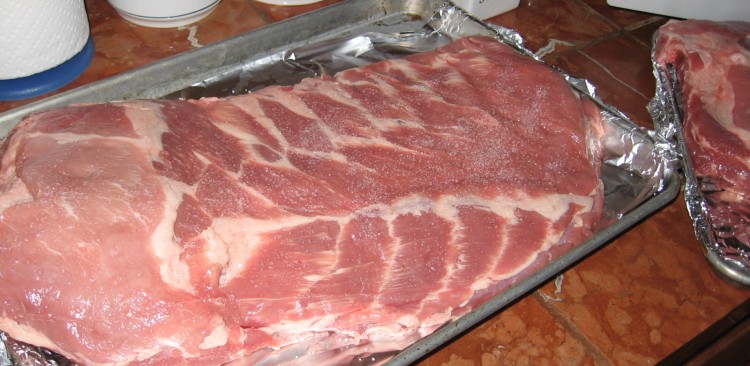
Rack of spare ribs set up on sheet pan
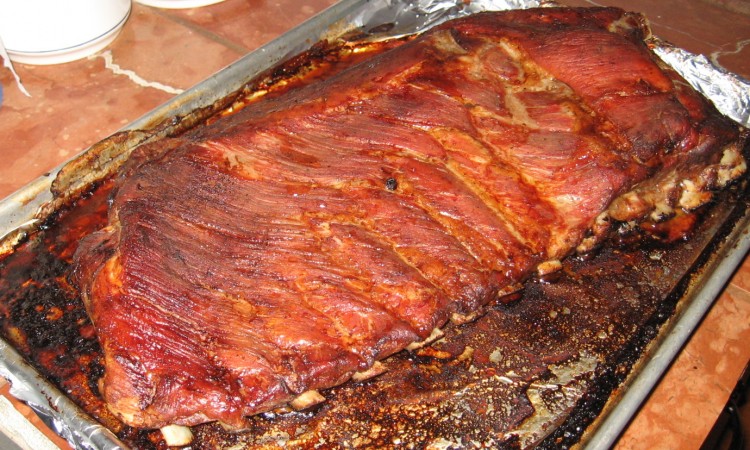
Ribs done and fully rested
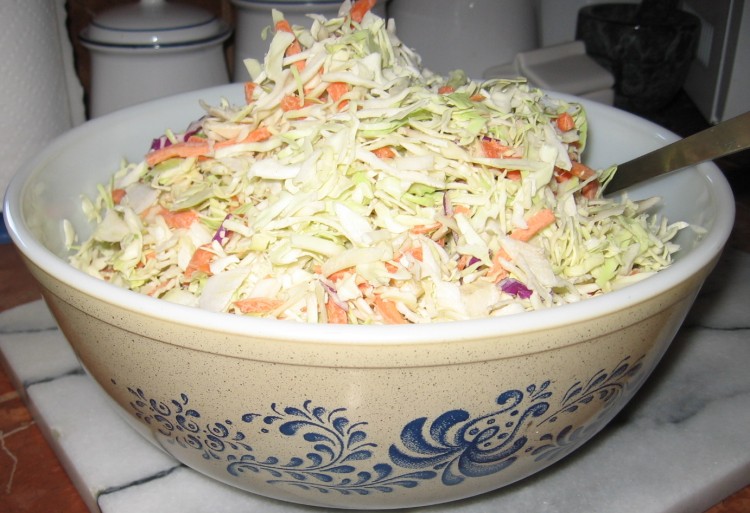
Tamarind cabbage slaw when first put together
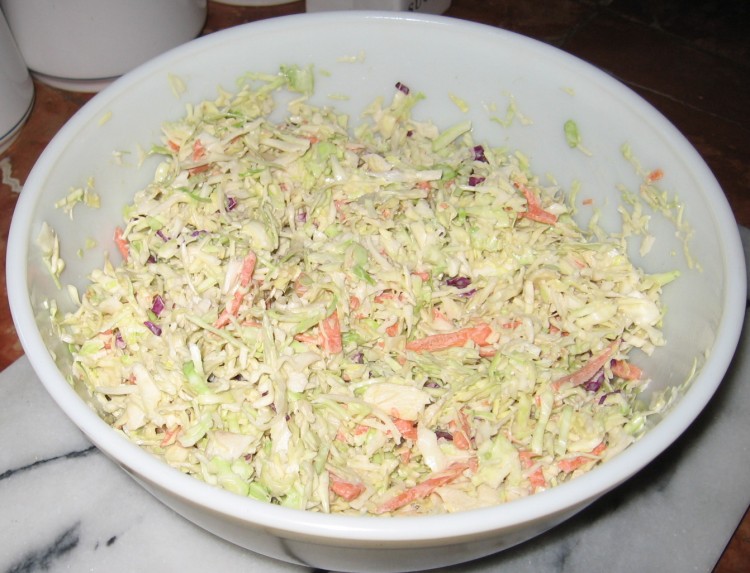
Tamarind cabbage slaw 30 minutes later
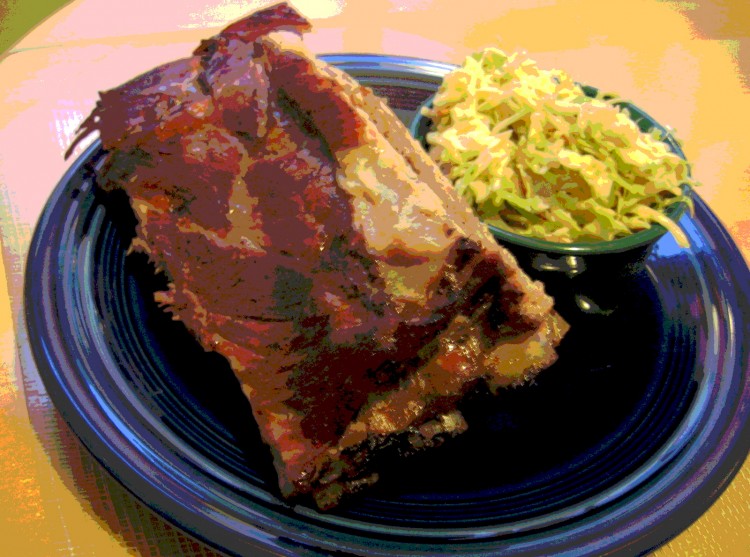
Ribs and slaw serving suggestion
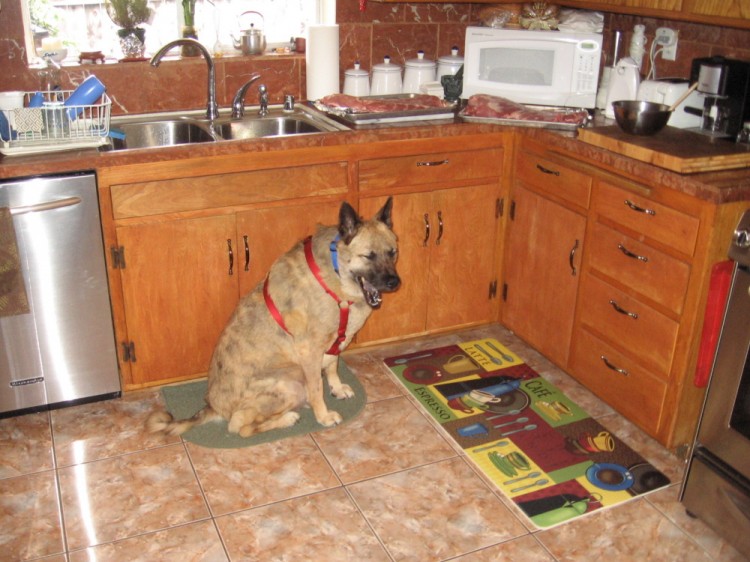
Berry bored waiting for something to happen with the ribs

